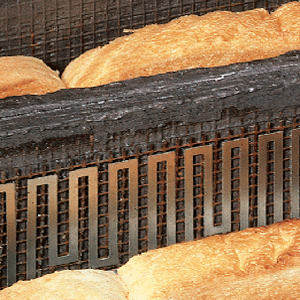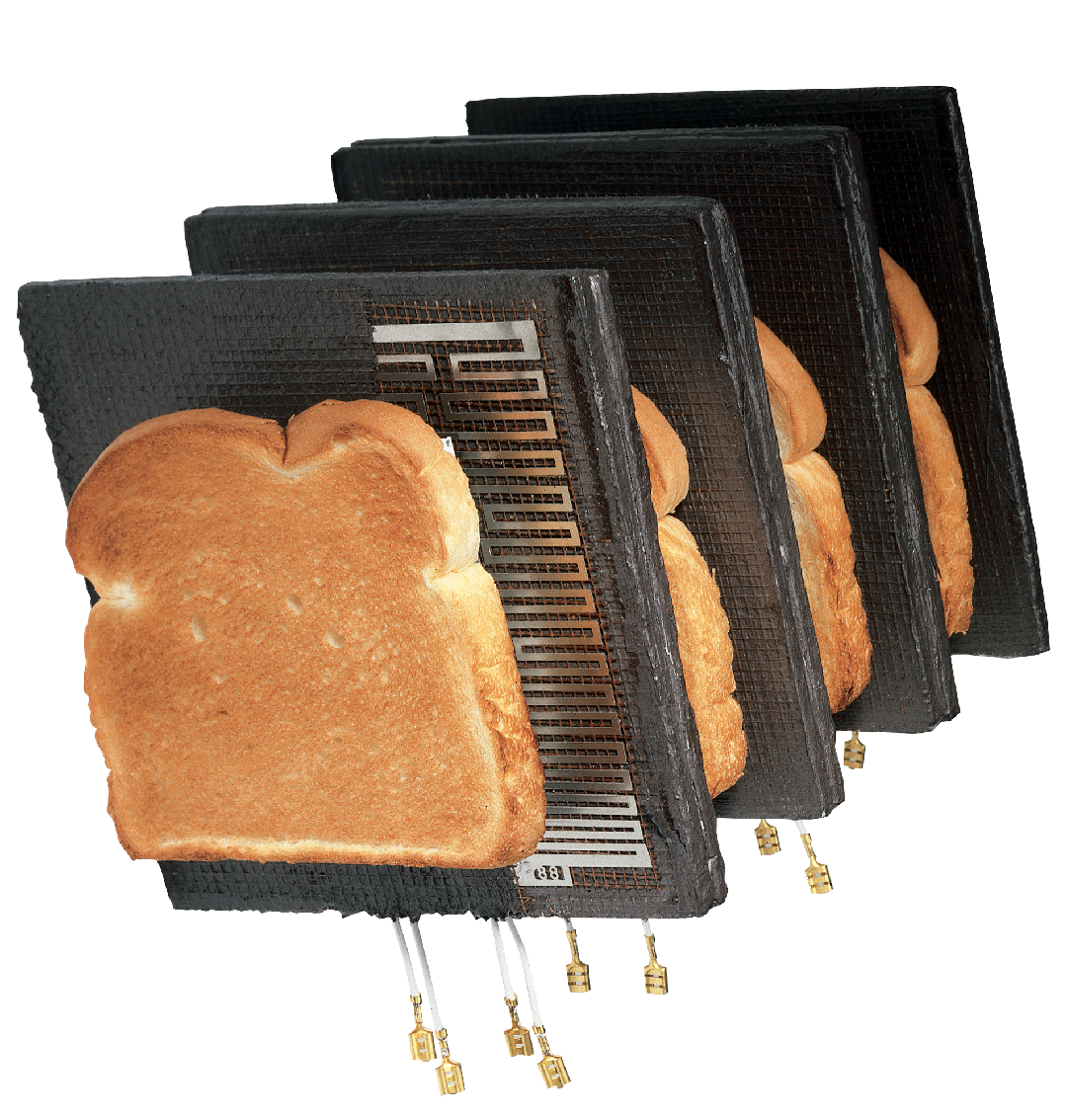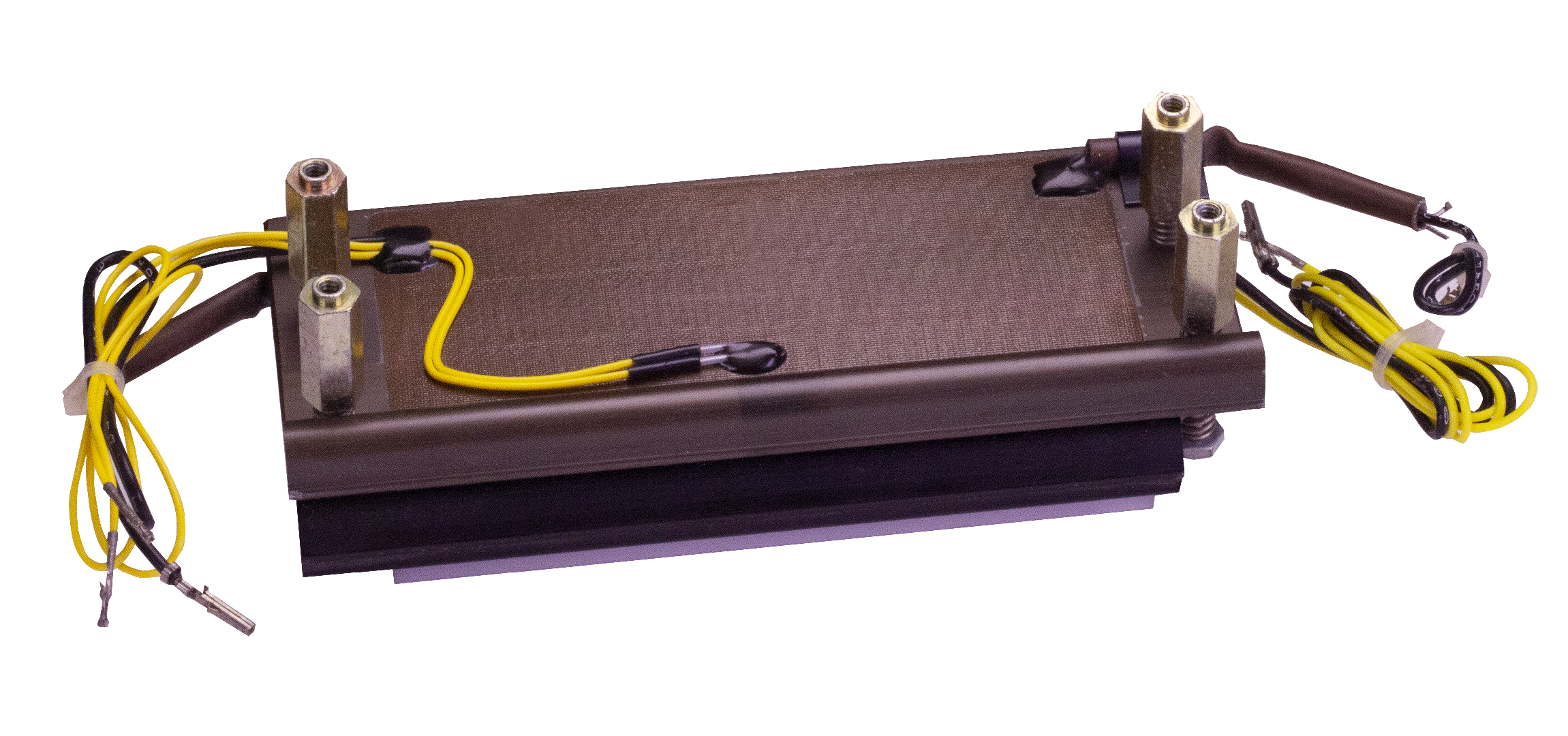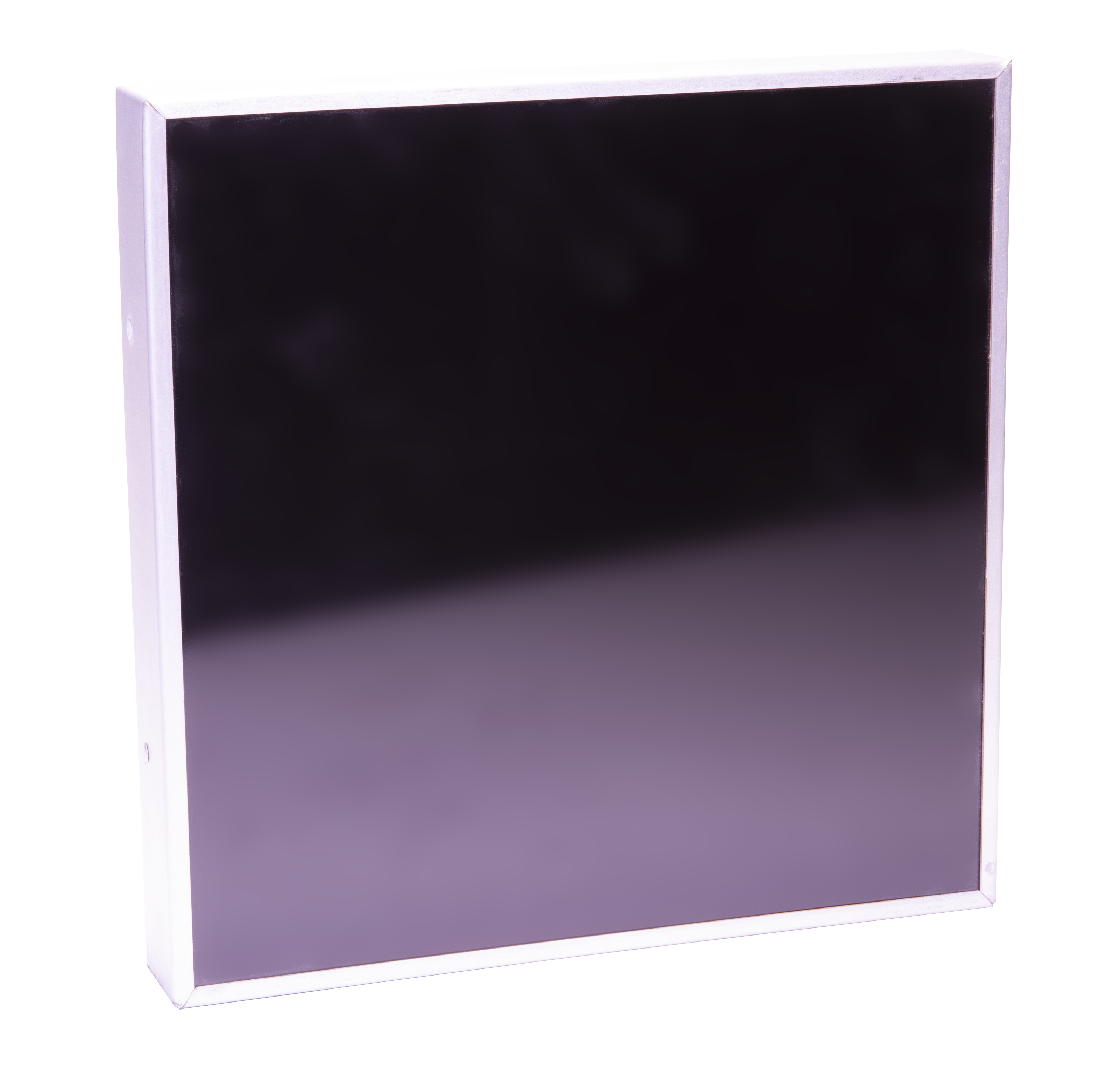Infrared Heaters
An infrared heater transfers energy by radiation. No contact or medium is needed for the energy transfer. Infrared heaters can be operated in vacuum or atmosphere. Infrared heaters are often classified by their wavelength emission.
Infrared heaters radiate up to 86% of their input as radiant energy. Nearly all the electrical energy input is converted into infrared radiant heat and directed onto the target. Some heat energy is removed from the heating element by conduction or convection, which may be no loss where all of the electrical energy is desired in the heated space.
Thermal Circuits’ etched foil infrared radiant heaters emit uniform heat across the entire surface of the heater. Etched foil heating elements are often made from nichrome. The etched foil element is then adhered to a ceramic body using a ceramic High Temperature Binder (HTB). Both the ceramic body and HTB are ideal materials for infrared radiant heaters. Thermal Circuits’ infrared emitters are typically used in the so-called low-temperature far range which use less energy. These heaters produce a longer wavelength of light which is more readily absorbed by organic or carbon-based materials (humans, food and other).
IR Heaters from Thermal Circuits offer many benefits including ease of installation and may include electrical connections for both power and temperature sensing.
The efficiency of the infrared heater is improved by matching the emitted wavelength and the absorption spectrum of the material to be heated. For example, the absorption spectrum for water has its peak at around 3 μm. This means that emission from etched foil infrared heaters is better absorbed by water and water-based materials in comparison to hotter, short-wave infrared radiation. The same is true for many plastics like PVC or polyethylene, which has a peak absorption around 3.5 μm. Hence, selection of the correct infrared heater type is important for energy efficiency.
Ceramic infrared heating elements are used in a diverse range of processes where long wavelength radiation is advantageous. Ceramic elements that operate in the temperature range of 300 to 700 °C (570 to 1,290 °F) produce infrared wavelengths in the 2 to 10 μm range. Most plastics and many other materials absorb infrared energy best in this range, which makes the ceramic heater. IR Panels are used in food processing, chemical processing, paint drying, and thawing of frozen materials. They can also be used for comfort heating in cold areas, incubators and medical applications including diagnostics and research.

IR heaters provide advantages, including:
- Extremely high temperatures, limited largely by the maximum temperature of the emitter
- Fast response time, ~ 1–2 seconds
- Temperature gradients
- Focused heat in comparison to conductive and convective heating methods
- Non-contact. Thereby not disturbing the product as conductive and convective heating
Infrared Heaters – Applications
Toaster – Traditional Vertical and Horizontal IR Heaters
(Consumer and Commercial)
Thermal Circuits’ etched-foil toaster element toasts faster and more uniformly. This fact is accomplished with a longer wavelength of IR energy in which organic/carbon-based materials more readily absorb. In a vertical position the circuit pattern can be profiled to provide the most heat across the bottom and a linear watt density gradient from bottom to top as well as sides to center. The construction of the toaster element/ceramic emitter consists of a softer primary HTB that enables expansion and contraction. The outer/secondary HTB is relatively harder which protects the primary binder, and element while matching the application’s structure and thermal needs. Horizontal etched foil toaster elements are produced in a similar manner and with the same advantages. The toaster heater is the forerunner to Thermal Circuits’ Infrared Panel Emitters.
Infrared Panel Emitters
Capable of producing temperatures up to 800 Degrees Celsius or 1500 degrees Fahrenheit. These heater assemblies are constructed from high temperature fiberglass, quartz and ceramic cloths refractor insulation, and are capable of producing high watt densities that are varied to attain the desired thermal profile and performance.
Industries We Serve
Automotive Industry
Industrial & Commercial
Military & Aerospace
Energy & Batteries
Consumer Lifestyle
Printing 2D & 3D
Food Service & Kitchen
Medical & Biotechnology
Semiconductor &
Wafer Processing



